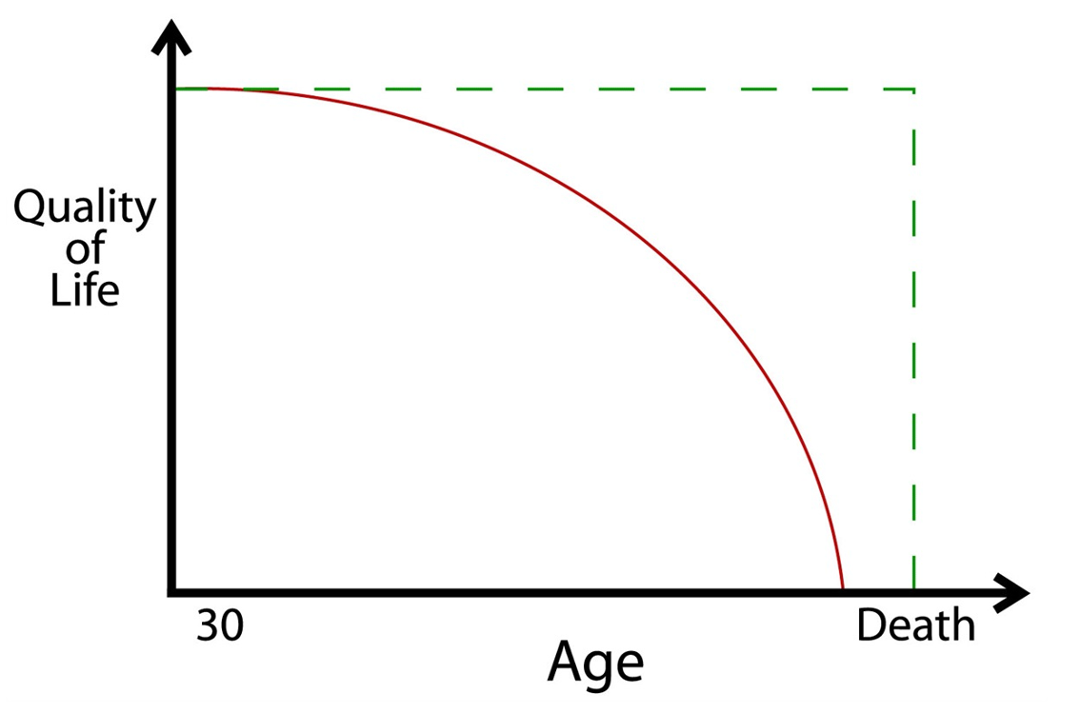Healthspan & Wealthspan, Not Just Lifespan
Sep 29, 2022
Eight years ago (October 2014), The Atlantic magazine was ahead of its time when it looked into the future when we all live to 100 years of age. The issue created waves when Ezekiel Emanuel, a well-known physician and member of the University of Pennsylvania faculty, argued that he wished to live not a day longer than 75 (“Why I Hope to Die at 75”). He contends that at approximately that age, eroding health outweighs the benefits of living longer.
Dr. Emanuel’s argument was less about living longer, or lifespan, than it was about healthspan, the number of years we live in good health. In this regard, he makes a critical point: what good is a long life if the quality of our health is poor? And what if we outlive our finances? We must also consider wealthspan, the number of years we have the financial means to support our desired lifestyle. (Scott Fulton, a longevity expert, has coined the phrase “Whealthspan” which merges these three ideas.) Dr. Emanuel’s point – and a very valid one – is that we should focus on the number of years for which we have a high quality of life, not simply the number of years for which we can live. (Atul Gawande makes some similar points in his brilliant book, Being Mortal.)
Squaring the Curve
Health professionals, wealth advisors, and longevity experts often talk about the hope of “squaring the curve”. The idea is that our health – and, therefore, quality of life – diminishes (as illustrated by a curve) as we age. It can reach a point where life is no longer desirable – to Dr. Emanuel’s point. In contrast, a more attractive outcome is to maintain a high quality of life over a long life until death. In this case, a horizontal line represents the quality of life until it turns sharply downward at death – creating a square.

An illustration of “Squaring the Curve” (Source: Kennedy Financial Services)
While achieving a square quality of life trajectory is a fantasy, we do know that through lifestyle decisions, including where we live, and careful financial planning we can reduce the slope of our quality of life curve.
The Opportunity and Challenge of Increasingly Long Lives
At the same time, and lost in the shuffle amidst the pandemic, lifespan has been on a steady rise for college-educated people in the U.S. For example, over the last couple of decades but pre-pandemic, we have seen an increase in the life of expectancy of about five years for college graduates of age 25. Today, such individuals are expected on average to live another sixty years to about 85 years of age. Most experts assume that COVID-19 will behave similarly to the Spanish Flu of 1918 where a temporary dip in life expectancy is followed by the prior trendline.

Average U.S. Life Expectancy at age 25 pre-pandemic (Source: The Economist)
Some health experts are particularly bullish on the potential of outsized gains in lifespan and corresponding healthspan. Michael Roizen, an anesthesiologist, internist, and chief wellness officer at the Cleveland Clinic, is a co-author of a new book, The Great Age Reboot: Cracking the Longevity Code for a Younger Tomorrow. His claims seem radical: he expects living to 100, 120 or even 130 years of age will become increasingly common over the next decade and with a corresponding improvement in quality of health. His view is based on assumed rapid gains in technology and health innovation, such as gene editing, to drive these advances. Some longevity optimists anticipate a time of “longevity escape velocity” where one’s remaining life expectancy is extended longer than the time that is passing.
Advances in longevity create the prospect of longer, healthy lives but will we be purposeful, socially connected, and financially secure over these additional years?
 Some places make social connection easier (Photo by Nick Night on Unsplash)
Some places make social connection easier (Photo by Nick Night on Unsplash)
Role of Place as Central in Longevity Planning
Researchers point out that longevity is largely driven by our lifestyle than our DNA. By some estimates, lifestyle and our environment account for about 93% of our longevity outcomes. Therefore, we have agency over our longevity. Lifestyle decisions also impact our quality of life.
Where we live and how we choose to make the most of where we live are significant decisions at any stage in life. Place is a valuable life hack as the right place can elevate social connection, physical well-being, and financial well-being, among other factors. For example, some neighborhoods are more socially connected than others. Some areas, through annual gatherings such as Fourth of July parades, Halloween festivities, and park workdays, bring people together – often across generations – in an organized way. Some neighborhoods are designed with front porches or greater housing density that allows for frequent informal interactions that help stave off loneliness.
Key is making sure you are at the right place at your stage in life – and one of the reasons the average person moves a dozen times in their life. An openness to change and the ability to act – however overwhelming it can be – is critical to make sure where you live matches your needs and desires at a given time.
Ezekiel Emanuel was probably being provocative in his stated desire to not live a day past 75. Plus, he’s only 65 so it is a theoretical exercise for him (I know plenty of people 75 and older that do not hold his view). But with likely continued gains in longevity, his central point is more important than ever: focus on quality of life, not simply lifespan. To achieve the desired “squaring of the curve”, planning, including careful selection of where to live and a regular evaluation of whether you are in the right place, has never been more important.
Take the Right Place, Right Time Assessment
Are you in the right place for right now? This quick assessment will reveal opportunities to improve your life.
Subscribe to The Blog
We hate SPAM. We will never sell your information, for any reason.

